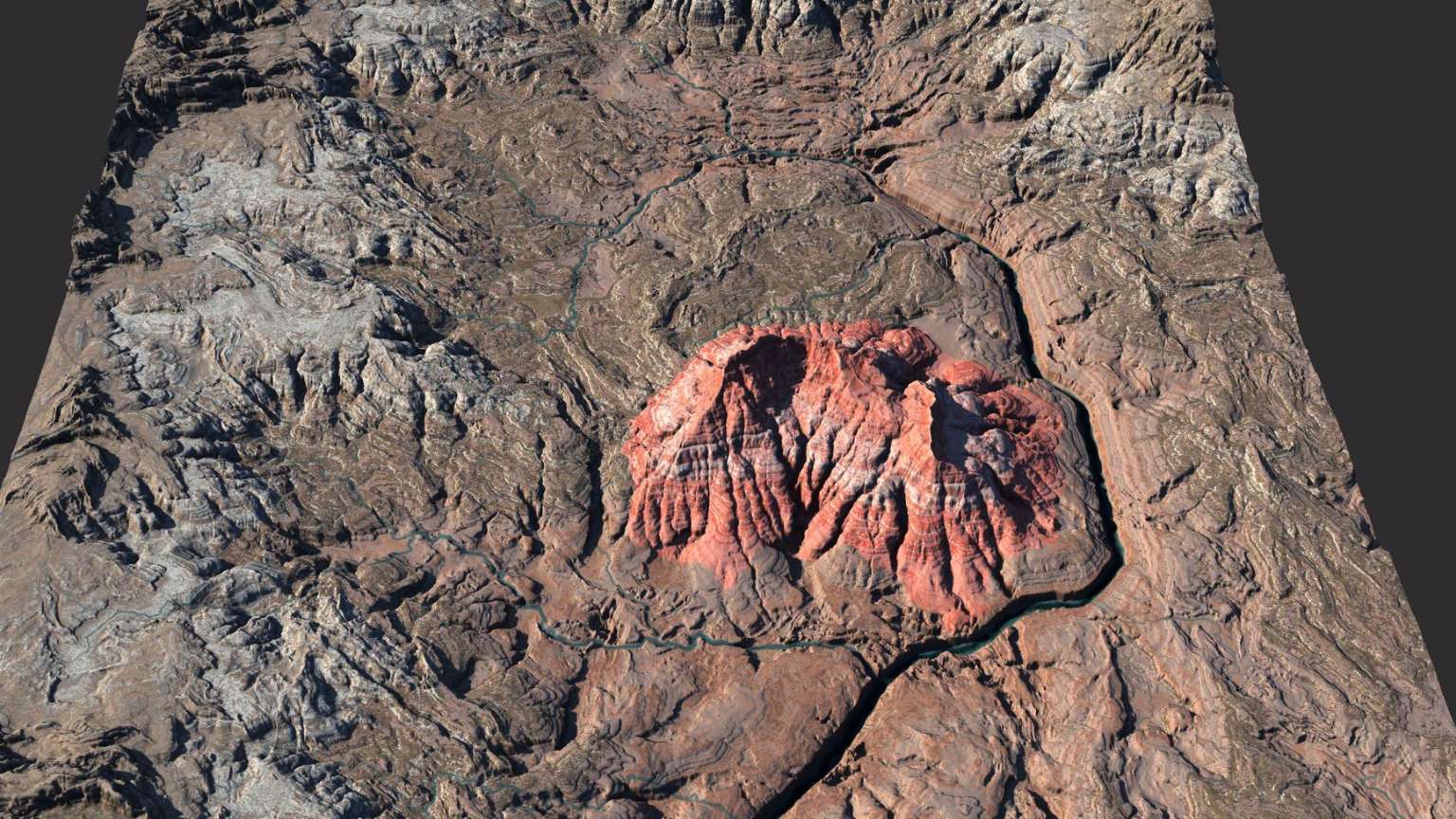Gaea is a versatile terrain design application designed for VFX, games and virtual productions. It offers features like geological shapes, advanced erosion, snow and river simulations, rock tools, and an extensive texture generation toolkit, all within an artist friendly and easy to learn package.

QuadSpinner, the software studio behind the project, has recently published a comprehensive introduction to the upcoming 2.0 version, scheduled for release in late Q1 2024.
Gaea 2.0 will include a revamped engine, offering improved efficiency and flexibility. This upgrade will result in faster results and reduced memory usage.
Quadspinner claims that the new version will significantly outperform Gaea 1, delivering a smoother terrain creation experience.
Key benefits include faster algorithm processing, enhanced physics and simulations, new shapes and processes, node modifiers, and GPU-accelerated processes with CPU fallbacks.

Physics powered debris/rocks.
In addition to the current Erosion algorithm that will also receive enhancements, a new Erosion_2 is being introduced. Erosion_2 expands erosion capabilities and achieves CPU speed improvements of up to 10 times compared to the existing algorithm.
It strikes a balance between realism and creative freedom, allowing for the quick creation of shapes that were challenging or unlikely in Erosion_1.
Key features of Erosion_2 include advanced erosion options, access to new shapes, better preservation of the original terrain's character, easier to control and master, and full deterministic erosion without performance loss.

Erosion_2 being used to erode the same terrain in four different ways.
The terrain design workflow has also been revamped based on feedback from major studios and artists. This feedback highlighted challenges in preserving specific shapes and surfaces when creating larger terrains.
The new workflow divides terrain construction into two phases: large-scale and small-scale shaping, eliminating concerns about maintaining intricate surface quality.
Some advantages of the new terrain workflow 2.0 include an "Infinite base terrain", visual tools for creating expansive worlds, the capacity for individual users to generate super high-resolution terrains, team collaboration features, and "Glue" technology for seamless merging of different terrains.
Workflow 2.0 introduces additional features such as "God Mode", enabling specific portions of large-scale worlds to be modified, with the surroundings reacting to the changes. Separate biomes and areas can be managed independently while sharing procedural characteristics.

Furthermore, Gaea 2.0 will include a fully featured Bridge to Unreal Engine 5 (UE) for easy terrain importing and modifications. The Bridge imports terrain with materials and masks, allows property adjustments within UE, and automatically updates the terrain graph based on in-game changes.
Gaea is offered as a perpetual license that includes updates until the next major version. Pre-orders for Gaea 2.0 will start this CyberWeek, beginning on November 24th. Users who pre-order Gaea 2.0 during CyberWeek will gain access to an early access version expected to become available approximately 2 months prior to release.
For more information about this new version, visit the original publication of Quadspinner Gaea 2.0.




